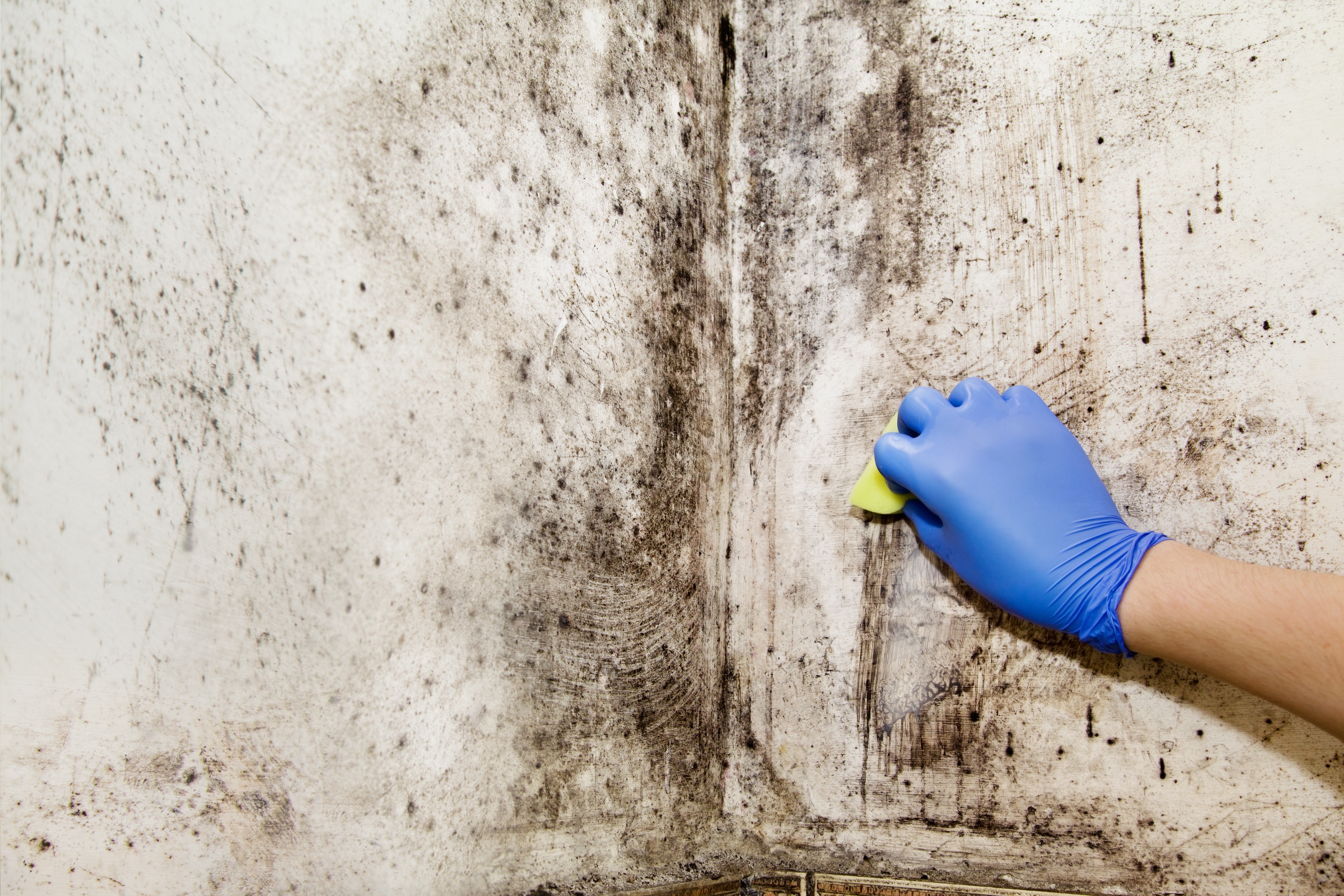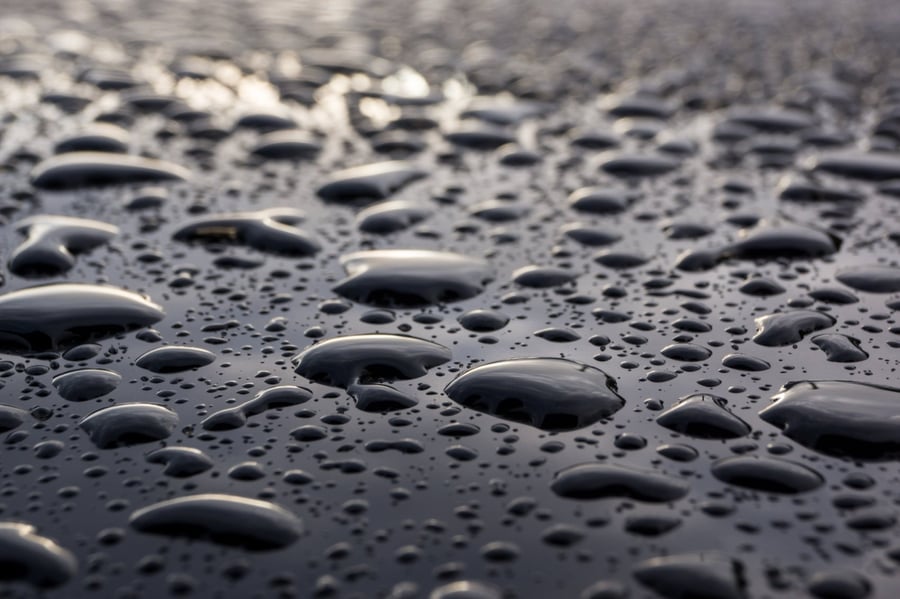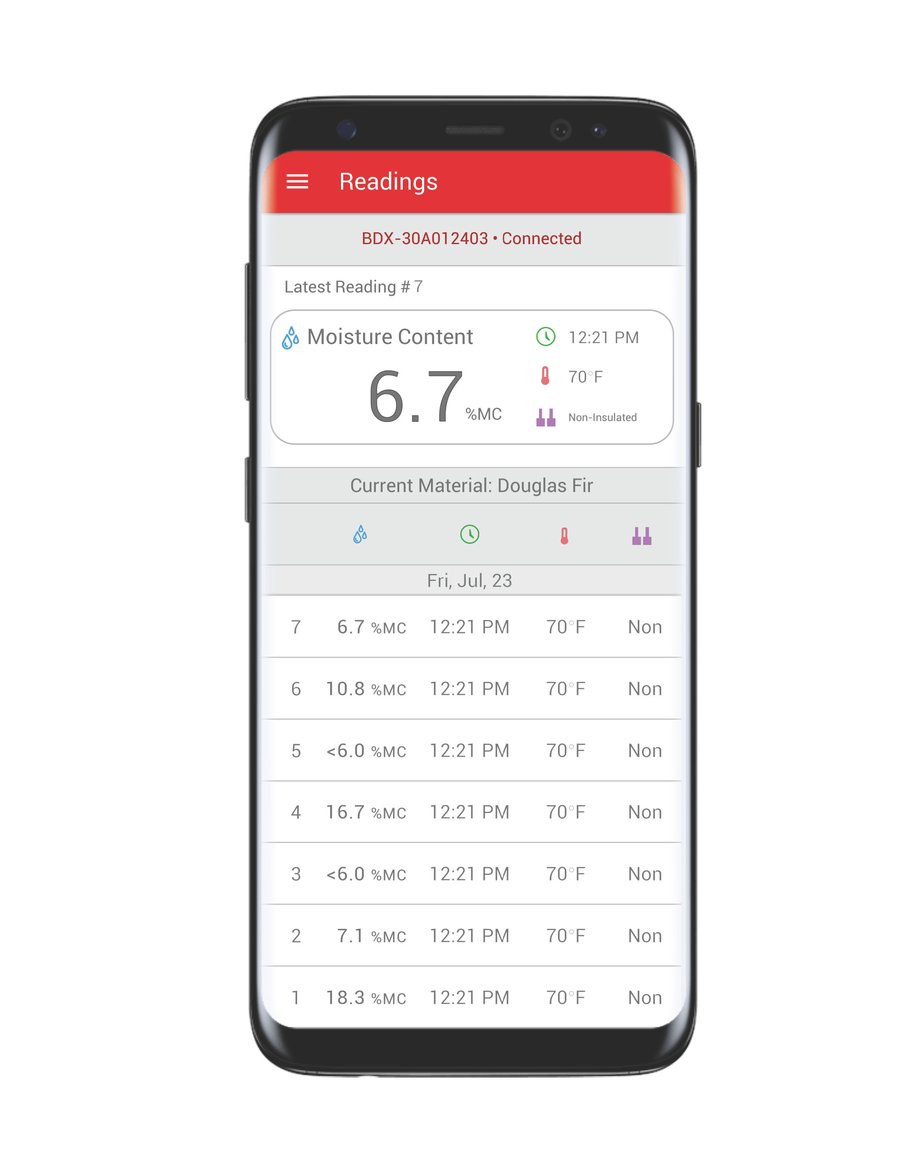Using Moisture Meters to Determine Mold Risk

When it comes to determining mold risk, moisture meters are one of the most useful and important tools a mold remediation expert can have. Why? Because, as noted by the EPA, "there is no practical way to eliminate all mold and mold spores in the indoor environment; the way to control indoor mold growth is to control moisture."
Mold spores are virtually everywhere, and will grow quickly once they achieve the ideal conditions. So, to prevent mold growth, it's important to find spots that may give mold the ideal conditions it needs to grow and eliminate them. This is where moisture meters come in.
The tools used today for detecting moisture are incredibly accurate pieces of technology that can pinpoint pockets of moisture hidden within surfaces. Detecting this moisture within property walls and flooring can indicate areas where corrosion and mold risks may be present. In the eradication of mold and hazardous fungi, a thorough inspection is key.
The most intensive and thorough safety inspections of moisture, indicating where mold may grow, can be achieved using modern, high-quality moisture meters.
Accurate Detection and Safety Assurance
Detecting mold is very difficult. Surface checks for mold often can't identify the areas with enough moisture to foster mold growth. Additionally, the spores themselves are hidden deep within moisture pockets. Bodies of moisture hidden deep behind walls, under floors, or within concrete can allow the formation and spread of hazardous mold, undetectable by the naked eye.
Mold spores, which linger on surfaces, can often survive thorough cleaning and drying, and thrive undetected by conventional means. Using moisture meters, however, you can identify pockets of moisture within a surface, which in turn helps you to find where congregations of spores may exist. Knowing where moisture exists in a structure vastly improves your efforts to eliminate mold.
For home repairs, building inspections or simple safety checks, moisture meters are incredibly powerful and accurate instruments for detecting moisture. They can reveal potential mold risks to property owners before a minor problem turns into a significant safety hazard. Unattended or hidden moisture in a home or office’s insulation, basement, or attic can quickly facilitate the growth of dangerous mold, which ruins property values and can cause health issues.
Also useful tools when inspecting a house or building for purchase, today’s moisture meters can detect areas where significant concentrations of moisture may have impacted structural integrity, and even help to establish the safety of homes in flood and disaster areas. With the accuracy of moisture meter technology, home buyers and sellers can rest easy knowing the comprehensive moisture status of their property, which can be a deciding factor in many sales.
How Moisture Meters Detect Moisture
Today, there are two variations of accurate moisture meter technology used to detect moisture in building materials to establish mold risk:
- Pin-type meters use wood, cellulose fibers and other hygroscopic materials as a circuit element, sending electrode currents through the material with two pins. This is based on the principle of electrical resistance, and identifies water presence within the material.
- Pinless meters perform the same function as models with pins, but use radio frequency signals in place of electrical currents. These meters emit signals into the scanned surface, and do not physically enter or damage the tested surface.
Pinless meters are ideal for scanning larger surface areas in a short timeframe, and serve best to highlight areas for further testing and inspection. Pin-type meters are better suited for exact and precise measurements, and can read moisture levels at various penetration points and locations within surfaces.
These meters, which measure moisture content (%MC), accurately test surfaces and areas for moisture which may make the material being tested susceptible to fungal growth and spread. For example, in wood surfaces with MC readings above 20% mold spores can develop. Other materials, such as drywall, have different tolerances for MC before mold becomes a problem. Check with a mold remediation expert for more information.
Where Hidden Mold Can Grow
Mold colonies, typically preventable by routine maintenance, can sometimes grow in unanticipated or hard-to-see areas. If left undetected, these colonies can grow and pose serious, sometimes fatal health risks and complications.
Knowing where to look and scan with a professional moisture meter can be the difference between catching young colonies and dealing with devastating mold growths later on. Some of these hidden spots where mold spores and colonies can develop include:
- Beneath tile, wood flooring, subfloors and carpets;
- Between walls and within drywall;
- Insulation material between walls;
- Ceilings and/or roofs with leaks; and
- Dark, damp attics and basements.
If left unchecked, minor moisture pockets and damp areas within wall and home structures can quickly allow harmful mold growth, which greatly affects the value of a property and the safety of persons in that property. Long-term mold growth and moisture buildup can even harm or ruin the structural integrity of entire buildings, making them unstable and incredibly hazardous for occupants.
Preventative Measures: Early Detection
One of the great benefits of using moisture meters in home inspections and safety surveys is their ability to detect mold colonies and dangerous building damage through moisture before the problem grows in severity. Being able to pinpoint mold and moisture quickly, and before serious damage occurs, can help homeowners avoid the need of costly repairs and renovations later on as the mold spreads.
Hidden moisture pockets can breed serious structural damage and an array of bacteria and insect activity. These agents can spread disease and create complicated health problems if left unattended or undetected by simply using traditional naked eye cleaning and inspections. When using Moisture meters, pockets of moisture can identify hazardous concentrations of bacteria and mold quickly and accurately, saving property values and irreversible damage to property structure, such as rust, rot and decaying materials.
Professional-grade moisture meters give exact and detailed information about the scale and severity of moisture pockets, which allow potential mold growth. Being armed with this knowledge allows for much narrower and more effective countermeasures to be taken. The effectiveness and accuracy of moisture meters give them an integral place in the toolbox of any restoration expert, contractor or DIY carpenter.
To discover more about the powerful role moisture meters play in the identification of dangerous mold, contact us today or fill out our request form to see what type of moisture meter is ideal for your work.
Subscribe to Our Blog
Post Related

How to Use the TotalCheck Moisture Meter to Save Time and Money


